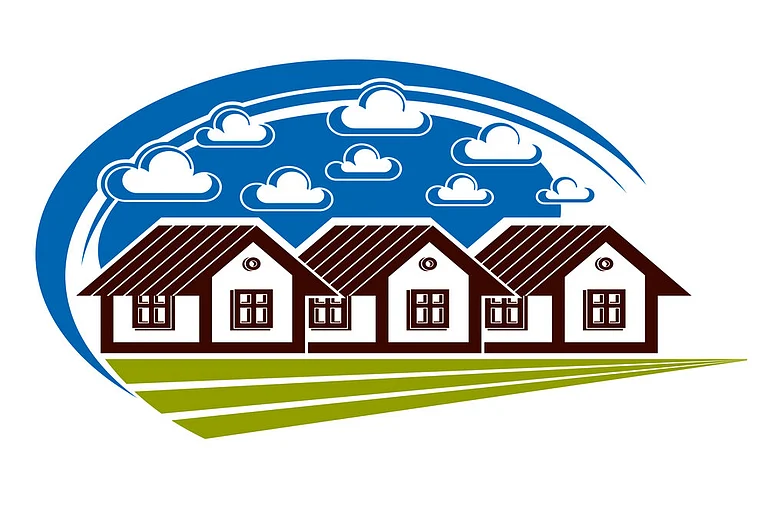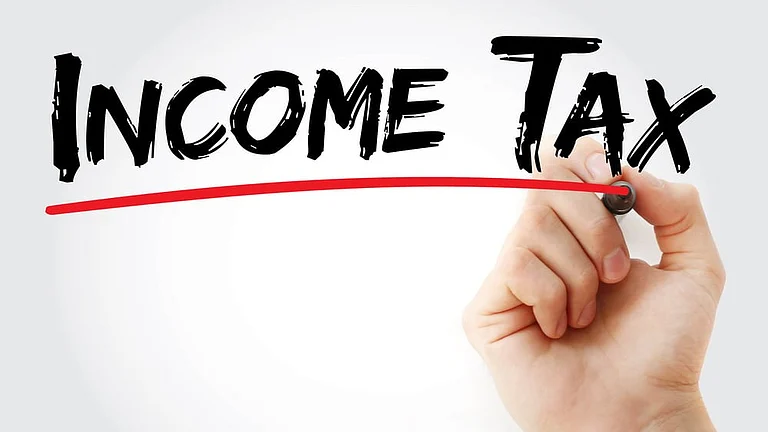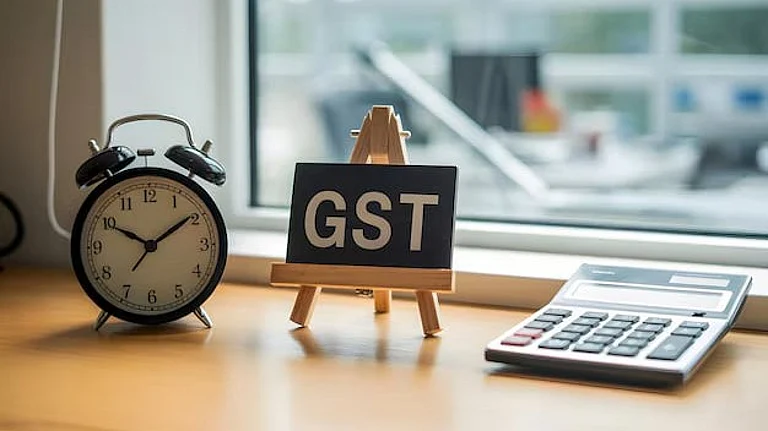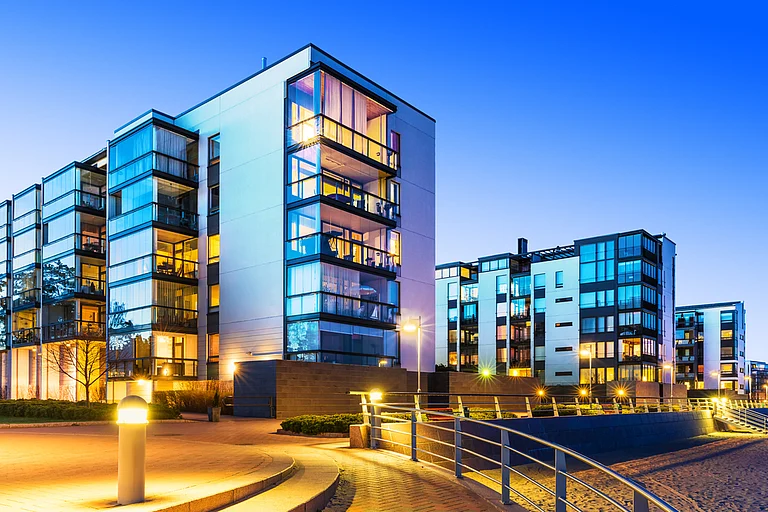
The government proposes GST rationalisation to 5% and 18%, raising hopes for affordable housing
Lower input costs (cement, steel, tiles) could ease construction burden but benefit transfer depends on developers
Despite strong demand, affordability worsens as property prices, land costs, and construction expenses rise faster than incomes
The central government’s latest push for GST rationalisation - from four tax slabs to just two rates of 5% and 18% - has given a ray of hope to homebuyers as it can revive developers’ interest in affordable housing segment. The new reforms can potentially lower inputs costs such as cement, steel, and tiles that weigh heavily on housing prices.
However, it completely depends on developers whether they will pass on the benefits to buyers or use them to cushion profits. The latest reforms are expected to replace the current indirect tax regime by Diwali this year.
This came at a time when affordable housing, the segment meant for middle and lower income homebuyers, has been losing steam in recent years, with builders are focusing more on luxury homes.
When Affordable Houses Became Unaffordable
Affordable housing in India has become a challenge for both homebuyers as well as developers due to rising property prices over the past few years. India is expected to have 31.2 million affordable housing units by 2030 with the market size of ₹67 trillion, according to a report by Confederation of Indian Industry (CII) and Knight Frank. As of December 2024, India had 10.1 million affordable houses.
If we look at the breakdown, 22.2 million units of housing will be required in urban centres alone, of which 21.1 million will fall in the affordable homes segment. Desipite this demand, the affordable housing segment attracted capital inflows of $ 1.6 billion, which is just 9.8% of the total capital directed towards the residential sector.
Data from another proptech firm Magicbricks also revealed that the country’s average Price-to-Income (P/I) ratio has surged to 8.8 in 2025 from 7.5 last year. This highlights that property prices are climbing far faster than household incomes. In simple terms, an average home now costs nearly nine times the annual income of a family, which makes affordability an even steeper challenge.
On top of this, home loan EMIs and income ratio of a household with an annual income of ₹0.3 million per annum has increased from 43% to 62% in 2024. The ration exceeds the Fixed Obligation of Income Ratio (FOIR) limit of 50% established by the banking sector in India. This also limits the scope of home loan borrowings for the EWS buyers.
The current trend makes affordability “unaffordable”, which has also moderated the interest of private developers in such housing projects due to lower profitability, increase in land costs, construction costs, lack of institutional investments, etc.
Material, Labour Cost on the Rise
The cost of constructing real estate has increased inexorably. Anarock, in its latest report, stated that the rise has been especially brutal since 2021, for several reasons – inflation, supply chain disruptions, increased demand for infrastructure, global macro-economic events, and evolving government policy.
As per data, this cost went up by about 40% from 2019 to 2024. And in three years alone, it rose by 27.3%. The average cost for Grade A projects in a tier-1 city was approximately ₹2,200 per square feet in October 2021. And the number had gone up to nearly ₹2,800 per square feet in 2024.
Several factors are pushing up construction costs, which include raw materials, labour costs, city-specific variation, etc. For instance, the price of cement and steel have went up to 30-57%. The labour cost, probably the biggest factor behind overall cost increases, also surged by 25% in the last year and 150% since 2019.
Construction budgets have also been impacted by the rising costs of approvals, logistics (due to rising fuel prices), compliance, and overhead costs. Major cities like Mumbai, Delhi, and Bangalore always have higher costs, and Anarock says that there is a greater need for trained workers.
On the other hand, tier-2 and tier-3 cities and those with easier access to cheap land and materials, have lower overall construction costs.
Can GST Reforms Turn This Page?
With the rising construction costs and affordable housing slipping out of reach, the proposed GST reforms can bring some respite. Realty experts suggest that the move could reshape the affordability equation, especially if lower taxes on key inputs bring down project costs.
“This would be a major relief as it would decrease the overall tax burden on critical input costs. Developers will have to pay less for cement, steel and other inputs and will also benefit from simplified regulatory compliance,” said Anarock. Currently, the affordable housing is taxed at 1%.
However, this reduction would be limited though lower input costs, especially if input tax credits are restored, can lower prices by up to 2-4%. And in the mid segment, a GST reduction from 5% to 3% could cut prices by 2-3%, according to the real estate consultancy firm.
Yet, tax tweaks may not be enough. As Anshuman Magazine, chairman & CEO for India, South-East Asia, Middle East & Africa, CBRE, explains that the affordable segment is constrained not just by higher construction costs but also by rising land prices and outdated definition of what qualifies as “affordable” in tier 1 cities.
Currently, the segment has a price cap of ₹45 lakh and it has become financially unviable for developers to increase supply as average land prices in most tier 1 cities have grown at a CAGR of 12-20% between 2020 and 2024, he added.
Developers, however, are not unanimous in their assessment. While Sterling Developers’ Ramani Sastri highlights the immediate boost GST reforms could bring to affordability, Kumar from M5 Mahendra Group stresses that without complementary demand-side measures, the impact of GST reforms could remain limited.
“With lower tax expenditures and more transparency in prices, households could also see an increase in disposable income, allowing resources to be available for other purposes and enabling home ownership to become more attainable,” said Ramani Sastri, chairman and MD of Sterling Developers.
The fact that such reforms are being introduced over the festive season, a time traditionally considered favourable to purchase a home, could also be a motivating factor to encourage buyers to take the plunge, rendering home purchases economically feasible.This ripple effect helps generate employment opportunities and propels economic development.
However, M5 Mahendra Group’s Yathish Kumar argues that developers will still need a stronger demand-side push through targeted subsidies for homebuyers, lower interest rates on affordable home loans, and time-bound stamp duty incentives or reduction in stamp duty from states.
“A combination of input tax credit restoration and demand-linked benefits is essential to make the housing segment viable again. While GST reforms are a step in the right direction, only a holistic policy framework can truly revive housing in India,” he added.



































